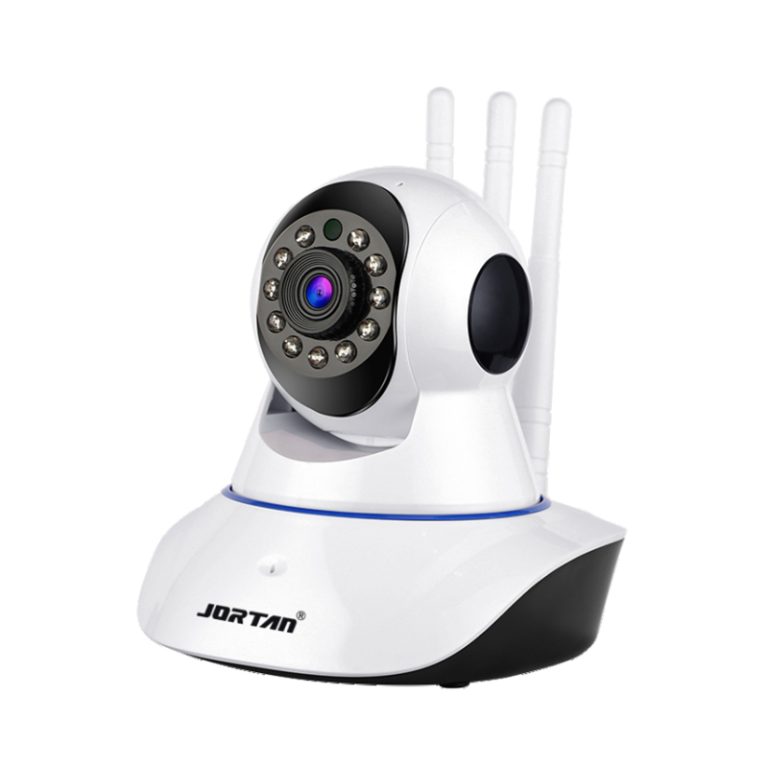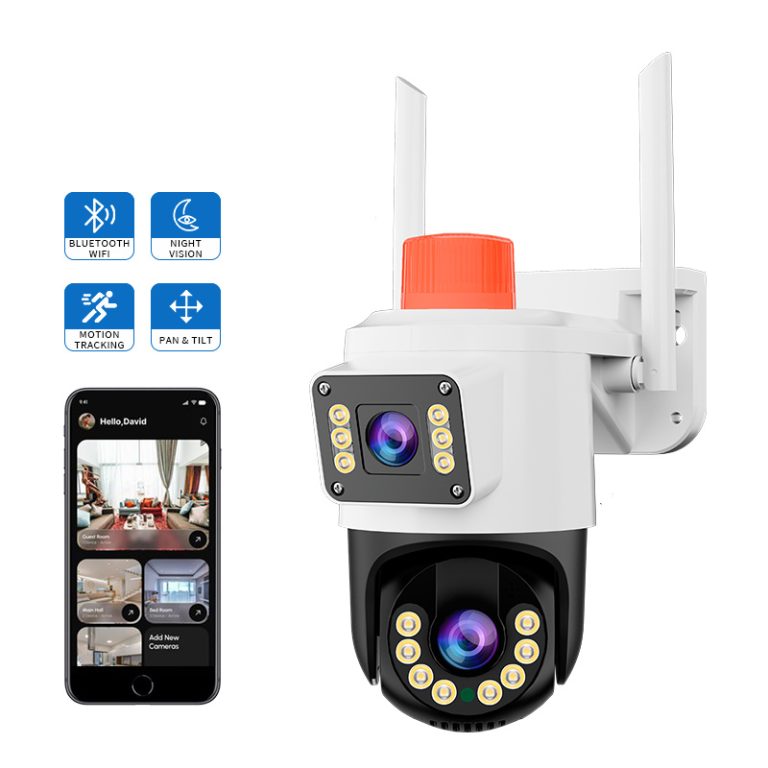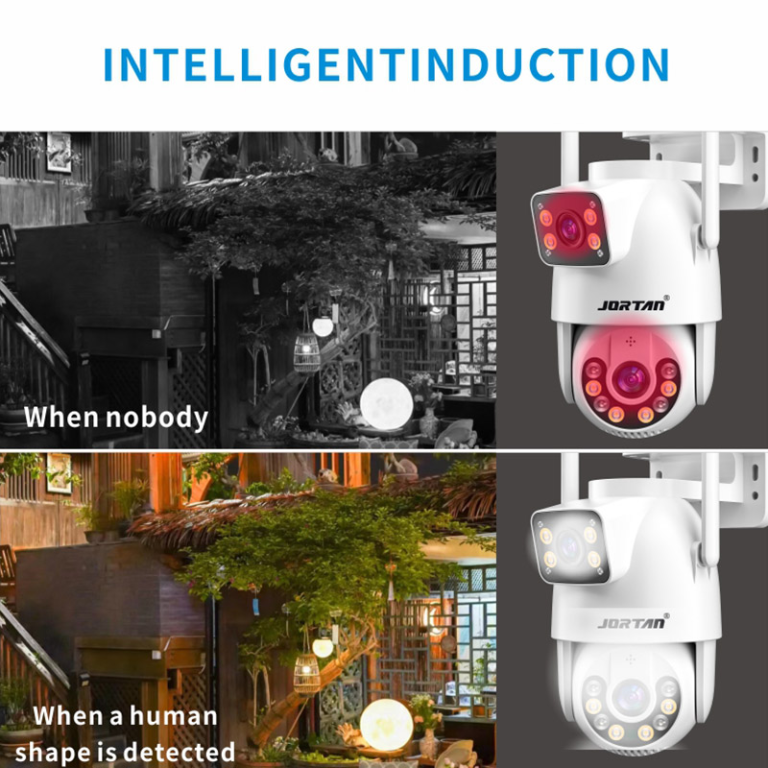Modern surveillance systems rely on wireless WiFi security cameras which provide users with improved home and business monitoring capabilities through enhanced convenience and flexibility. The combination of wireless technology progress with smart integration has made these cameras more accessible while also improving their scalability and user experience. Users need to evaluate wireless WiFi camera security camera systems through their advantages and disadvantages when deciding to improve home security or business surveillance systems.

Overview of Wireless WiFi Security Cameras
Before delving into the overview, it is essential to define a wireless WiFi security camera.
What Is a Wireless WiFi Security Camera
A wireless network camera transmits video via WiFi or 4G mobile networks, distinguishing it from traditional network cameras by its wireless signal transmission methods.
Common Applications in Home and Business Settings
The eight main accessories of surveillance cameras include shell, chip, lens, infrared light, lens holder, camera tail screw and copper column packaging box which serve multiple purposes in urban main and secondary road communities and factories and tourist areas and rooms and halls and parking lots and other locations. The products demonstrate their ability to operate in different settings between indoor and outdoor areas.
Key Features Typically Offered
The wireless WiFi security cameras feature high-definition video recording at 6MP resolution and include night vision through infrared and full-color modes and motion detection alerts and two-way audio and remote access through ICSee or Yoosee mobile apps and storage options between cloud and local TF card up to 256GB.
Advantages of Wireless WiFi Security Cameras
Wireless WiFi cameras have become more popular because they offer simple operation and flexible installation options. The main advantages of these cameras need to be examined.
No Need for Complex Wiring
The main benefit of these systems is their ability to operate without requiring extensive cabling. The Wireless WiFi host enables wireless cameras to establish their connection. The installation process becomes faster and less expensive because of this system design.
Portability Across Locations
These cameras operate without cables which makes them simple to move between locations thus they work well for renters and businesses that need to rearrange their spaces.
Smartphone App Integration
Most wireless security cameras available today enable users to monitor their feeds through mobile devices. Users can monitor their security cameras through mobile devices by using the ICSee or Yoosee apps which support both iOS and Android operating systems.
Live Streaming Capabilities from Anywhere
Users can access live video feeds from anywhere in the world through internet connectivity. The system enables remote monitoring through mobile applications and sends alarm notifications to users for continuous security updates.
Lower Installation Costs Compared to Wired Systems
The lack of physical wiring infrastructure and professional installation services enables users to save money on setup expenses in most cases.
Scalability for Expanding Coverage
The process of adding new cameras to an existing system involves simple network connection through WiFi. The system allows easy expansion of coverage areas when network requirements change.
Compatibility with Voice Assistants and Automation Systems
The majority of models support smart home integration through ONVIF standards and third-party connections which allow voice commands and automated features such as motion-sensitive lighting.
Limitations of Wireless WiFi Security Cameras
The devices offer numerous benefits yet users need to evaluate their restrictions before making a buying decision.
Risks During Network Outages or Weak Signals
The operation of wireless systems depends on reliable internet connectivity. The system performance becomes unstable when operating in rural locations or during internet service disruptions. The system experiences video feed interruptions and connection drops because of weak signal reception.
Risks of Unauthorized Access or Hacking
These systems face potential cyber threats because they operate through networks unless they receive adequate security measures. The use of WPA2 encryption together with strong passwords protects these systems from cyber threats.
Battery Life Concerns for Some Models
The operation of battery-powered units needs users to charge their batteries or replace them periodically. The placement and usage patterns of these units determine how often users need to charge or replace their batteries which might be inconvenient.
Challenges with Outdoor Power Sources
The outdoor installations do not have power outlets in their proximity. The Jortan brand offers solar-powered models that need an extra purchase for continuous operation.
Impact from Walls, Appliances, or Other Devices
The strength of WiFi signals decreases when they encounter dense walls and when other electronic devices produce interference. The video quality suffers and alert delays become more frequent.
Performance Considerations in Different Environments
The performance of wireless WiFi security cameras depends on the specific location where they are installed.
Indoor vs. Outdoor Use Cases
The outdoor gun – ball linkageflexible and convenient to installwith a wide field of view and clear details. Most outdoor models achieve IP66 weatherproofing standards which provide protection against harsh environmental conditions.
Urban vs. Rural Network Conditions
The internet infrastructure in urban areas exceeds that of rural areas. People who live in remote areas need to use signal boosters or 4G-enabled models as their main internet connection.
Comparing Wireless WiFi Cameras with Wired Alternatives
Wired surveillance systems maintain their usefulness in specific applications yet operate with distinct characteristics compared to wireless systems.
Installation Process Differences
Wired systems need extensive cabling that runs through walls and ceilings for professional installation but wireless systems operate with plug-and-play functionality.
Reliability and Data Transmission Stability Comparison
The reliability of wired connections remains superior because they provide steady bandwidth without experiencing interference yet IEEE 802.11n wireless technology provides sufficient performance in typical usage scenarios. Wireless standard: IEEE 802.11b/g/n; Frequency range: 2.4 GHz ~ 2.4835 GHz.
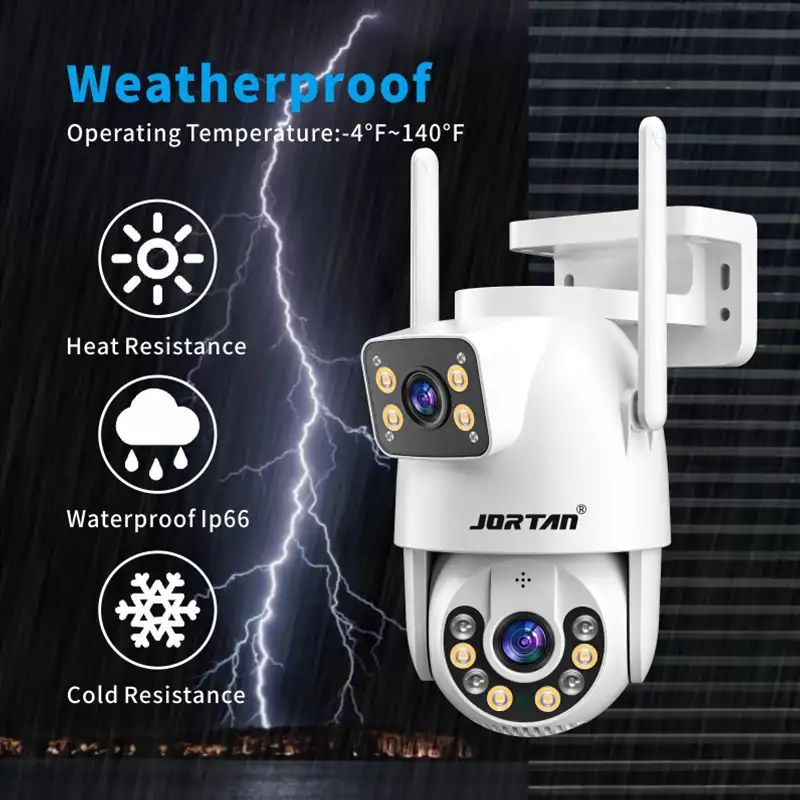
Key Features to Look for When Choosing a Wireless WiFi Camera Security Camera
The selection of your ideal model depends on these critical factors.
Video Resolution and Night Vision Capabilities
Look for HD resolutions such as 1080p or higher (e.g., 2048×1536), along with IR-CUT night vision for low-light clarity Day night conversion mode: Support IR-CUT night vision full-color night vision infrared intelligent full-color.
Motion Detection and Alerts
The system provides real-time alerts through object tracking technology which enables you to detect any suspicious behavior right away. Support object tracking alarm message push.
Cloud Storage vs. Local Storage Options
Users can select between storing data on cloud servers or using local TF card storage which supports up to 256GB capacity depending on their privacy requirements Storage method: Local TF cardCloud storage.
Two-Way Audio Functionality
The system enables users to communicate remotely through integrated microphones and speakers which support two-way voice intercom and audio-video synchronization for visitor greeting and intruder deterrence.
Brief Introduction to Jortan as a Trusted Supplier in the Surveillance Industry
ZheJiang Jortan Electronic Technology Co., Ltd. operates as an OEM/ODM manufacturer which produces smart security solutions from 2013 until present. The company ZheJiang Jortan Electronic Technology Co., Ltd. received its establishment on September 13, 2013.
Their product line includes:
- IP Camera solutions compatible with ICSee APP & Yoosee APP
- Monitoring packages including DVRs/NVRs tailored for home/business use
- Solar-powered dual-lens cameras offering wide coverage while saving energy
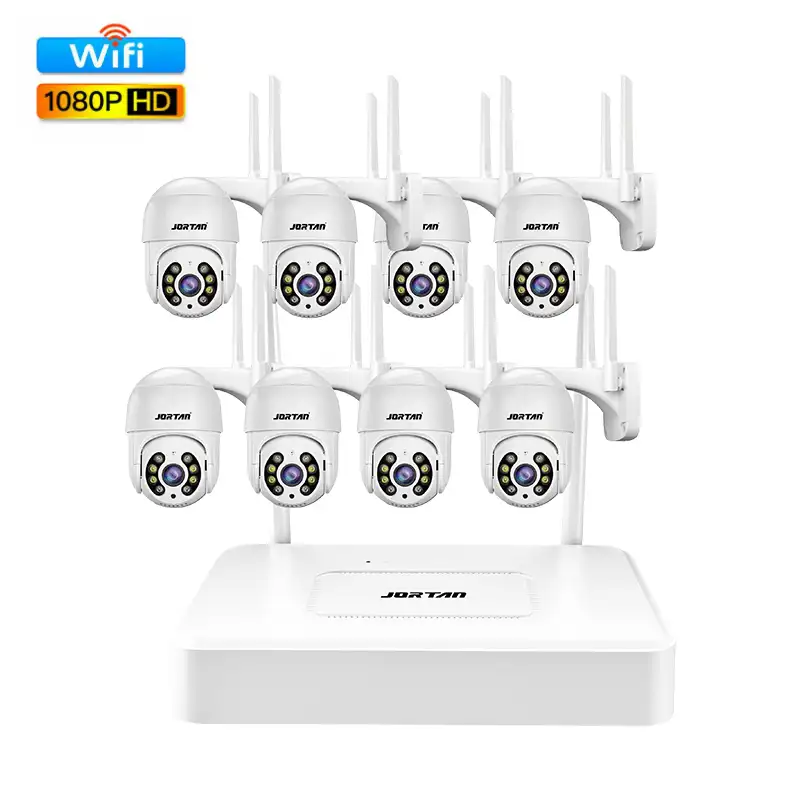
The company offers customization options that include logo printing and packaging design services as well as logo customization and color customization and product testing standards that meet strict requirements. All products at our company pass through rigorous testing procedures.
Summary of Pros and Cons of Wireless WiFi Security Cameras
The convenience of wireless WiFi security cameras lies in easy installation, mobility without rewiring, and affordable remote access via smartphones. However, they require reliable internet, posing security risks, outdoor power issues, and indoor signal disruptions from barriers or other devices. Choosing them depends on environmental conditions (urban/rural, indoor/outdoor), budget, and preferences between flexibility and reliability.
FAQs:
Q1: Do wireless WiFi security cameras function well when used outdoors?
A: Yes! Outdoor-specific models of these cameras are designed with weather-resistant features, including an IP66 waterproof rating. They also have built-in infrared night vision capabilities, enabling effective nighttime outdoor surveillance.
Q2: Can users view the feed from wireless WiFi security cameras remotely?
A: Absolutely! The system allows users to view their cameras through the ICSee or YOOSEE app on iOS and Android devices, providing live streaming capabilities from any location with internet access.
Q3: What level of security do wireless WiFi security camera systems maintain?
A: These devices implement WPA2/WPA-PSK encryption standards along with password protection systems for security. Additional security features include WPA/WPA2 encryption with 64-bit or 128-bit WEP encryption. For maximum security, users should regularly update their firmware and change default passwords after setup.

